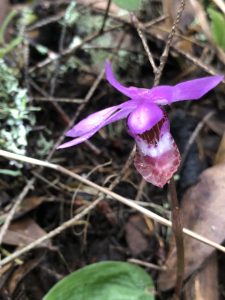Date: 3/8
Location: Marin County, California
Coordination: 37.9235° N, 122.5965° W
Elevation: 2,572′
Directions:
Site description:
Mount Tamalpais offers hiking, picnicking and wildlife scenery along the Mount Tamalpais Railway. This area is surrounded by breathtaking views of fog and clouds. The panorama from Mount Tamalpais is 2,571-foot peak and includes the Farallon Islands 25 miles out to sea, the Marin County hills, San Francisco Bay, the East Bay, and Mount Diablo. There are a variety of habitats in this site including redwood forests, oak woodlands, open grasslands, and sturdy chaparrals. The diversity of microclimates in this site causes various plant species to thrive, including various types of hardwood and wetlands vegetation. The most abundant species seen in this site include Coast Live Oak, California bay, and madrone.
Species Description:
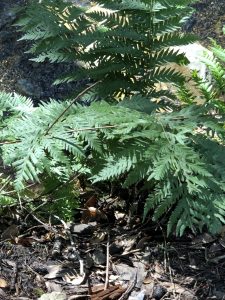
Common Name: Douglas fir
Species: Pseudotsuga menziesii
Overall plant and its habitat: evergreen conifer species native to western North America, between 20–100 metres (70–330 ft) tall
Leaves: The leaves are flat, soft, linear, 2–4 centimeters long, occurring singly rather than in fascicles
Cones: The female cones are pendulous, with persistent scales unlike true firs
This plant was found in the early section of our hike.
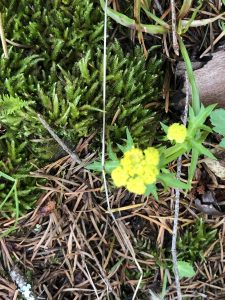
Common Name: Turkey pea
Species: Sanicula tuberosa
Overall plant and its habitat: prennial herb, around 80 centimeters long
Leaves: compound, divided into usually three leaflets which are smooth or deeply cut into lobes
Flowers and inflorescence: The inflorescence is made up of one or more heads of bisexual and male flowers with tiny, curving, yellow petals
Stem: slender
This plant was seen in the early section of our hike and is usually found in many types of habitat, including chaparrals, forests, and woodlands.
Leaves: dark green, oval leaf measuring up to 3.5 centimetres long
Flowers: small pink, accented with a white lip, darker purple spotting
Stem: dainty and purple stem
This flower was found in the middle section of Mount Tamalpais and is usually found in Redwood Forest, Mixed Evergreen Forest, Yellow Pine Forest, wetland-riparian.
Narrative:
We left USF around 1 pm on Thursday 3/8. The weather was moderate and sunny. It took us around 45 minutes to get to Mount Tamalpais. We stopped on our way to enjoy the gorgeous views and took a class picture. Hiking in Mount Tamalpais was challenging because of the steep and rocky hills. Once we got to the top we were able to see more species. Many of the species we saw, were also present in our previous hiking trips and it was a good way to remember them. Overall, the hike was exciting since we got to enjoy the beautiful views and take pictures.
Additional Species seen:
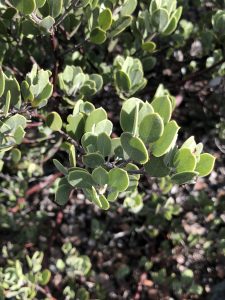
Common Name:Mount Tamalpais Manzanita
Species: Arctostaphylos montana
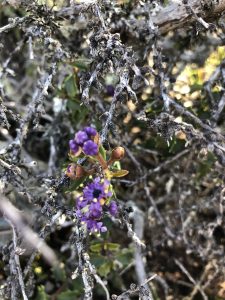
Common Name: Musk brush
Species: Ceanothus jepsonii


